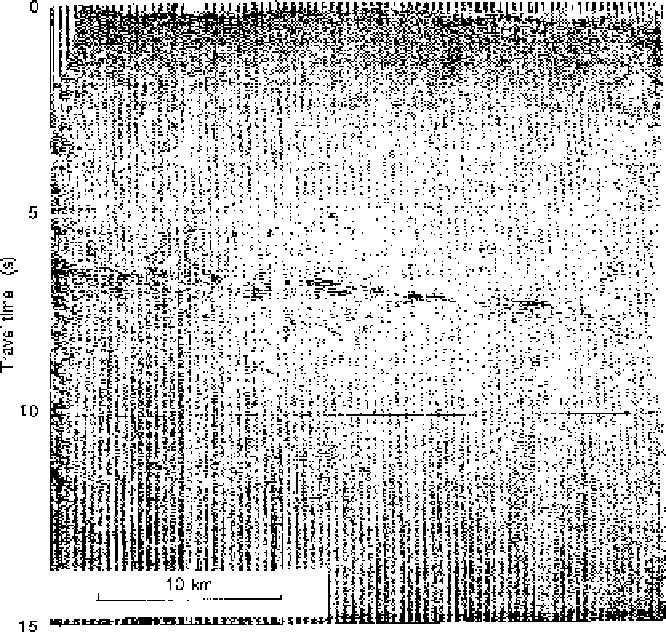Geoscience Reference
In-Depth Information
Figure 4.51.
The
Consortium for Continental
Reflection Profiling
(COCORP) has shot
reflection profiles over
many types of continental
structures in the U.S.A.:
accreted terranes,
extensional rifts, thrust
zones and so on. This
record section is part of a
series of profiles shot
across the Rio Grande Rift,
New Mexico, an active
extensional rift (discussed
in Section 10.4.3). The
high-amplitude reflections
at about 7 s two-way time in
the midcrust are inferred to
come from the lid of a
magma chamber. The
solid-liquid interface gives
a large reflection coefficient.
(From Brown (1986),
reprinted by permission.)
As an example, a reflection coefficient of about 0.10 is necessary in order
to explain the strong lower-crustal and upper-mantle reflections seen on some
deep seismic-reflection profiles. Such values are not easily achieved by juxtapo-
sition of proposed materials or measured velocities. A P-wave velocity contrast
of 8.1-8.3 km s
−
1
in the mantle gives a reflection coefficient (Eq. (4.62)) of 0.012,
assuming that there is no change in density. Even if somewhat larger velocity con-
trasts are considered and a change in density is included, the reflection coefficient
could hardly increase by an order of magnitude to 0.1. Mantle reflections of the
correct magnitude could, however, be produced by regions of partially hydrated
peridotite (i.e., water acting on mantle peridotite to produce serpentine, which
has a very much lower P-wave velocity), by bodies of gabbro or eclogite in a
peridotitic mantle or by mylonite zones.
Details of the structures as revealed by reflection profiling are discussed in
Chapter 10; here we point out two illustrations of the type of data which can
be obtained: Fig. 4.51,which is a record section obtained by COCORP over
the Rio Grande Rift in New Mexico, U.S.A.; and Fig. 4.52,which is part of a
record section obtained by the British Institutions Reflection Profiling Syndicate
(BIRPS) off the north coast of Scotland.

